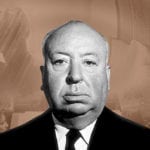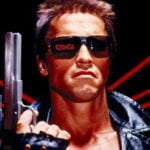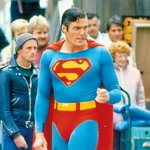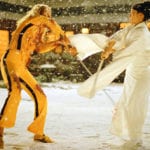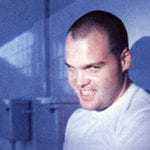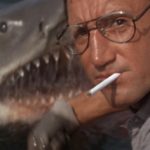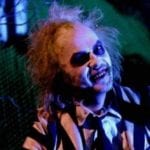 History
History  History
History  Creepy
Creepy 10 More Representations of Death from Myth, Legend, and Folktale
 Technology
Technology 10 Scientific Breakthroughs of 2025 That’ll Change Everything
 Our World
Our World 10 Ways Icelandic Culture Makes Other Countries Look Boring
 Misconceptions
Misconceptions 10 Common Misconceptions About the Victorian Era
 Mysteries
Mysteries 10 Strange Unexplained Mysteries of 2025
 Miscellaneous
Miscellaneous 10 of History’s Most Bell-Ringing Finishing Moves
 History
History 10 Great Escapes That Ended Right Back in Captivity
 Weird Stuff
Weird Stuff 10 Fascinating Things You Might Not Know About Spiders
 Food
Food 10 Everyday Foods You Didn’t Know Were Invented by the U.S. Military
 History
History 10 Most Influential Protests in Modern History
 Creepy
Creepy 10 More Representations of Death from Myth, Legend, and Folktale
 Technology
Technology 10 Scientific Breakthroughs of 2025 That’ll Change Everything
Who's Behind Listverse?

Jamie Frater
Head Editor
Jamie founded Listverse due to an insatiable desire to share fascinating, obscure, and bizarre facts. He has been a guest speaker on numerous national radio and television stations and is a five time published author.
More About Us Our World
Our World 10 Ways Icelandic Culture Makes Other Countries Look Boring
 Misconceptions
Misconceptions 10 Common Misconceptions About the Victorian Era
 Mysteries
Mysteries 10 Strange Unexplained Mysteries of 2025
 Miscellaneous
Miscellaneous 10 of History’s Most Bell-Ringing Finishing Moves
 History
History 10 Great Escapes That Ended Right Back in Captivity
 Weird Stuff
Weird Stuff 10 Fascinating Things You Might Not Know About Spiders
 Food
Food 10 Everyday Foods You Didn’t Know Were Invented by the U.S. Military
10 Bizarre Stories Behind The Movies Of Alfred Hitchcock
Alfred Hitchcock is one of history’s most influential directors. Brilliance doesn’t come without a price, though, and occasionally, that price was paid by those who worked with him. Known for pushing people to their limits—and sometimes beyond—Hitchcock is just as colorful a character as anyone he ever filmed.
10 North By Northwest Was Almost Filmed In Lincoln’s Nose

North by Northwest, starring Cary Grant, almost had a very different ending. It’s the story of an advertising executive from New York who becomes the target of foreign spies. Convinced he works for the government, they give chase while he’s forced to dodge them at every turn.
Mount Rushmore was one of the settings for the film, and you can’t get much more of an epic American setting than that. But originally, the scene was supposed to involve Cary Grant hiding in Lincoln’s nose after the foreign spies have chased him across the presidents’ faces. The writers scouted the real location—and were, not surprisingly, pretty horrified by the daunting task in front of them.
The National Parks Commission tried dissuading Hitchcock from filming his scene, suggesting that it was a pretty disrespectful thing to do. Hitchcock only agreed when it was turned around and suggested that he film a scene with Lincoln hiding in Cary Grant’s nose.
That wasn’t the end of the dispute, either. The Parks Commission forbade them from filming any violent scenes on the national monument, so Hitchcock solved the problem by having his production company rebuild Mount Rushmore in Hollywood.
9The Missing Film: The Mountain Eagle

According to Hitchcock himself, The Mountain Eagle was nothing short of a very bad movie. The story of a schoolteacher, a local Justice of the Peace who pursues her, and the weird hermit who saves her, it was hailed as brilliantly directed but overall pretty slow and ponderous.
The film, released in Germany in 1925, had a very limited release. It didn’t make it to England, and film historians are equally unsure if it was ever shown in America (where it was due to be released as Fear o’ God). A handful of production stills have been found recently, but the film itself is missing.
The movie was set in Kentucky, but Hitchcock traveled to the small village of Obergurgl, Austria to make it. Out in the middle of nowhere, filming started with a couple difficulties. It snowed the night before filming was to begin, so Hitchcock ordered fire hoses turned on the set to get rid of the snow. This set consisted of the villagers’ actual homes, and the roof of one of the houses collapsed. Hitchcock compensated the owner twice what was asked by the mayor, handing her two schillings for a new roof. In the meantime, he was making no friends in any other way, either. When he woke up vomiting from some illness, he swore it was the rather ungodly dialects of the villagers that was making him sick.
Hitchcock chose Obergurgl as the setting of his film after seeing it on the front of a postcard. During filming, the slights against the village and the locals were pretty hard-core—he refused to stay in the village inn in the same breath as complaining about their accents—but now, Obergurgl and its 400 or so residents hope that the movie once filmed in their little village will resurface.
8The Strange Filming Of Marnie’s Horseback Riding Scenes

Marnie is the story of a seriously disturbed woman haunted by the traumas in her past. One of her only comforts is her horse, Forio. While filming riding scenes, though, Hitchcock didn’t want to do them outside. Instead, he secured the use of a massive, 10-meter (30 ft) treadmill, and the horse playing Forio was trained to walk on it. If the scenes of Marnie riding seem a little bit off, that’s exactly why.
The horseback scenes aimed to create a moment of freedom and safety in the life of a woman who had none, but actress Tippi Hedren felt no freedom or safety whatever. The horse’s handlers were horrified at the idea of the treadmill. However, the scenes were overseen by the Humane Society, and the director of the AHA was fine with the idea, as long as scenes of Forio’s fate were as off-camera as possible and the riding was done responsibly.
During the climactic hunting scene, Hitchcock still refused to film with his actress riding a real horse outside. While close-ups could be done indoors, he turned to Walt Disney to borrow a mechanical horse for the outside scenes. Later, Hedren would remember the live horse as one of the few good things she’d encountered working on the set.
7California’s Real-Life Bird Attack

In 1961, thousands of birds descended on Monterey Bay in California. They couldn’t fly straight. They ran into buildings, regurgitated fish, and finally collapsed and died in the streets. The birds—sooty shearwaters, to be precise—made the newspapers on August 18. Not long after the story ran, the paper got a phone call from Hitchcock, who was interested in learning more about the winged nightmare that had fallen onto the city. It led him to produce The Birds, which was released in 1963.
For a long time, it looked like an isolated incident. Three decades later, it happened again, and this time, the area’s brown pelicans were suddenly attacking people and things at random.
Now, biologists from Louisiana State University have isolated the toxin responsible for the birds’ bizarre behavior. It’s called domoic acid, and it’s produced by a type of algae called Pseudo-nitzschia. Pseudo-nitzschia made up about 79 percent of the stomach contents of zooplankton during the times of the attacks.
Domoic acid is nasty stuff, and not just for birds. It gets more and more concentrated in the systems of animals that eat it as they go up the food chain, and it’s been linked to shellfish poisoning in humans. In 1987, more than 100 people took ill after eating mussels that contained the toxin, and four died from complications. In humans, it’s characterized by short-term memory loss, and in animals, including birds, it causes disorientation, seizures, and ultimately death.
6The Bathroom Scenes

Hitchcock famously showed the first on-camera flushing toilet in Psycho, but that wasn’t the only time the man’s bathroom fixation came shining through. The bathroom is arguably one of the most important—and consistent—of Hitchcock’s settings. He uses the bathroom as an incredibly tight space, enclosed and concealed, a place people hide or do something they need hidden. They’re places for spies and voyeurs to open secret messages and discover hidden things.
That, and Hitchcock loved his bathroom humor.
If the film didn’t lend itself to a bathroom scene, or if there just wasn’t enough bathroom in it, Hitchcock found other ways to include the bathroom in spirit if not in reality. The letters “B.M.” can be found scattered throughout his movies. John Kovac has a “BM” tattoo in Lifeboat, for example. In Shadow of a Doubt, the letters are engraved on a ring.
What does “BM” stand for? Bowel movement.
5Hitchcock’s Earliest Film
In 2011, the movie world was shaken when three reels of an old melodrama were uncovered in a New Zealand archive.
The White Shadow is the story of twin sisters—one good, one evil—who find themselves winding through a story of cabarets, mistaken identities, mysterious disappearances, wild romance, and equally mysterious meetings. The idea of a movie about good and evil twins was highly criticized for being both predictable and implausible, but it was recognized for its acting and its directing.
Hitchcock is listed as an assistant director, art director, writer, and editor. His directorial touch was so evident in it that it was identified with only about half the film reels surviving and no obvious links to him.
The reels were found in the private collection of projectionist Jack Murtagh. When Murtagh died, his collection was sent to New Zealand’s Film Archive. Labeled Twin Sisters, it was only connected to Hitchcock when one of the organizations archivists thought it bore an eerie resemblance to Hitchcock’s work. Some digging turned up reviews to the film, long thought lost. Half the movie is still missing, but the three reels that have been recovered are now preserved.
Hitchcock was 24 when the movie was filmed. He had only been in the business for about four years, having gotten his first job designing title cards.
4The Real-Life Crime Behind Rear Window

Rear Window is one of Hitchcock’s most famous films, and while Ed Gein is often quoted as being the inspiration for Psycho, this one, too, has a real-life inspiration.
Set almost entirely in a single apartment complex, the film features James Stewart as a photographer confined to his apartment after suffering a broken leg. He takes to watching the neighbors, becoming convinced that one of them has committed a heinous murder and is covering it up. The idea came from a bizarre and tragic 1920s murder case.
On May 2, 1924, London police stopped and questioned a man named Patrick Mahon. He was at the train station with a suspicious suitcase; inside were articles of bloody clothing and a knife. Police didn’t buy the story that he was taking meat home for dogs, and when they expressed doubt, he responded with something of a confession. The full truth didn’t come out until he was on trial.
He had a previous record for assault with a hammer, beating a woman nearly to death, and had also been targeted for burglary and a series of more minor offenses. His cover was as a Sunday school teacher, and it was when he was working as a teacher and a typist that he met Emily Kaye. Her bloody clothes were in the suitcase, part of his complicated attempts at disposing of her body after killing her.
His court testimony started that she first threw an axe at him, and her death was accidental, but it was the disposal method that Hitchcock would find inspired. Mahon had dismembered her body, carrying the pieces to the train station where he was apprehended. He would throw the boiled pieces of her body from the train along the line. Remains of bones were found partially burned in his fireplace, but her head was never found.
The idea of carrying a body out of the house piece by piece in a suitcase captured Hitchcock’s imagination and provided the real-world inspiration for Rear Window.
3Janet Leigh’s Stalkers

Many of Hitchcock’s leading ladies were traumatized by their work on his movies, in one way or another. Janet Leigh’s role as Marion Crane in Psycho had a pretty bizarre fall-out, though, tied to what might be one of the most famous scenes in cinematic history—the shower scene.
According to Leigh, she spent 35 years changing her phone number every few months because of callers looking to tell her that Marion Crane deserves to die again, and in real life. While she received quite a bit of the normal fan mail in the years following the movie, there were also letters from senders threatening to kill her in the shower in the same way she died on screen. Leigh always sent the letters to the FBI, and while nothing ever came of it, she’s said that those letters were a real source of fear.
The threats contributes the life-long terror that gripped Leigh when it came to the bathroom. She refused to take showers after filming—and seeing—the movie, saying that while filming it was frightening enough, seeing the final product cemented her fear. Her own house had only baths, and being forced to shower in hotels or at friends’ homes meant an overwhelming panic. She was only able to shower with the door and the shower curtain open and was unable to turn her back to the door.
2The Real-Life Murder That Delayed Psycho

Released in theaters in 1960, Psycho was due to make its television debut on CBS in September 1966. The network paid $800,000 for the rights to air the movie twice—and it never did, because of an eerily similar murder that took place just days before Psycho was to air.
Chuck Percy was a successful, well-liked senator living in Chicago. On September 18, 1966, his daughter, Valerie, died in the upstairs bedroom of their 17-room villa. According to reports, the killer clearly knew the home, knew where to go, and was there for the sole purpose of killing the 21-year-old. The killer bludgeoned her to death. Valerie’s mother saw him as he stood over his victim, but he was never brought to justice.
The killing was close enough to the events of Psycho that CBS canceled its end-of-the-month showing, deciding that it would be in bad taste to show the film in light of the recent events.
CBS never rescheduled Psycho, and it didn’t make its television debut until almost six months later. In June 1967, it was finally aired by a New York station that edited the infamous shower scene to show only three stabs.
1His Edited Cameo

One of Hitchcock’s trademarks was his cameos. As his appearances in his films got more and more popular, he moved them up toward the beginning of the movie so audiences weren’t distracted from the plot by looking for him. The director didn’t always get what he wanted, though.
His cameo in Notorious is a simple one—he’s at a party, drinking a glass of champagne. Originally, though, he wanted to be filmed walking down the street with a woman. He was going to be a deaf-mute, and when he signed something inappropriate to his companion, she was supposed to slap him. Word of the proposed cameo got out, and he got a deluge of disapproving letters—so the cameo was changed.
A couple other cameos have interesting trivia attached to them. His cameo in The Birds features not only him but his two real-life dogs, Stanley and Geoffrey. In The Wrong Man, the traditional cameo is replaced by a narration in the beginning, making it the only movie in which he speaks. Lifeboat presented particular problems because of the limited setting, so he appeared as both the “before” and “after” pictures in a newspaper advertisement. Both pictures really are un-doctored photos of him—Hitchcock struggled with his weight his entire life, and the photos in the ad were of him weighing over 135 kilograms (300 lb) and then when he was around 90 kilograms (200 lb).
All told, he appeared in 37 of his films.
